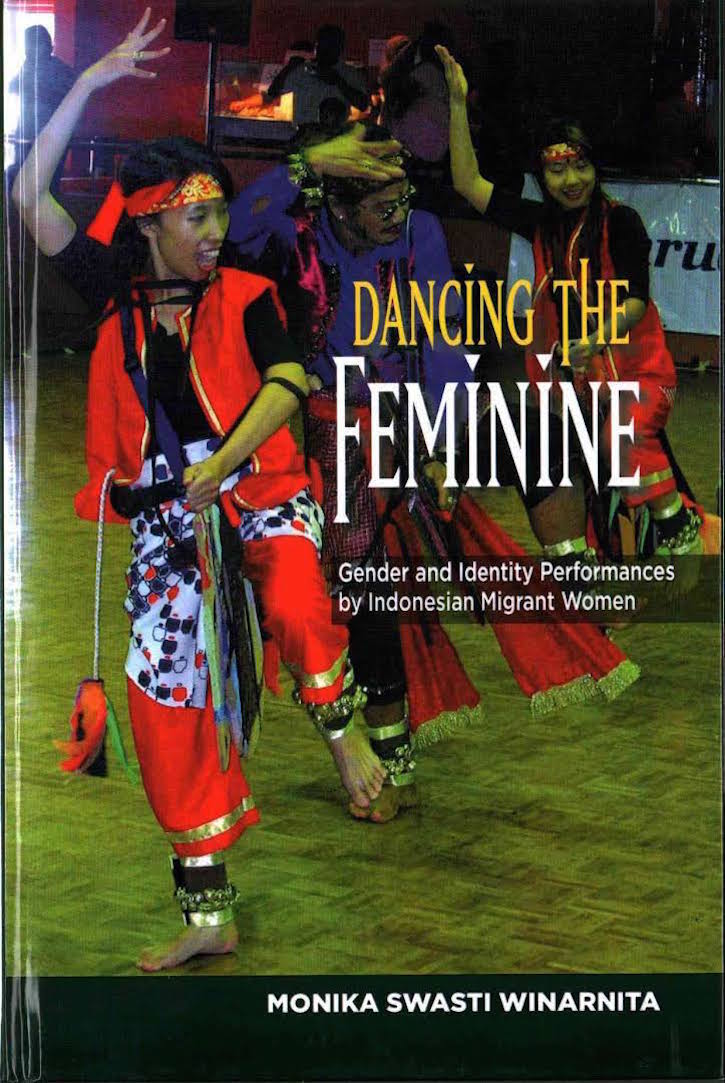Ken Setiawan
In March 2016, new figures released by the Australian Bureau of Statistics revealed that the number of Australian residents born overseas had risen to its highest point in 120 years, reaching 28 per cent of the total population. ABS data has also revealed that migration from Asia continues to rise. Settling into a new country is never easy. Not only are migrants faced with many practical issues, they must also come to terms with giving meaning to their identity in a new context. Dancing the Feminine tells the tale of how Indonesian migrant women in Perth address issues of identity and belonging, and use cultural performances to create social and cultural agency.
Based on extensive fieldwork in Perth, in which Monika Winarnita danced with the women she researched, Dancing the Feminine addresses many different aspects of the experience of migration. The book pays attention not only to the creation and aesthetics of dance, but also to gender identity, sexuality and the politics of belonging and marginalisation. This is a complex combination of topics, but one that Winarnita deals with admirably by consistently embedding her findings in a study of dance. By focusing on dance performances of migrant women, Winarnita not only subtly criticises the emphasis in performance studies on professional performances, but also demonstrates that cultural performance is a compelling avenue for discussing experiences of migrant life.
One of the most compelling examples is the manner in which Winarnita critically reflects on the notion of the ‘marginalised migrant’. Indonesian migrants are often immediately associated with domestic workers, yet in Dancing the Feminine, Winarnita focuses on women who have moved to Australia to join their (Australian) spouses. These women often find themselves in quite affluent circumstances and consequently are not considered to be marginalised. Winarnita draws attention to the negative stereotyping that these women encounter from both the Australian and Indonesian communities – portrayed as the ‘Asian mail order bride’ or a ‘bar girl’. The assumption is that these women have loose sexual morals and have met their husbands in dubious circumstances. This group of marriage migrants is also distinguished from Indonesian women who have come to Australia with their Indonesian spouses, in particular the wives of members of the diplomatic corps.
This stereotype in turn affects the perception that these women are somehow unfit to represent Indonesia on the cultural stage. This leads Winarnita to a fascinating discussion of the hierarchy of dance, which gives precedence to classic or court dances performed by those who have been trained since childhood. In contrast, the ‘amateur’ dances performed by the marriage migrants, that often mix various dance styles not exclusively from Indonesia, are ranked lower. Their dances are not necessarily well received by the gatekeepers of Indonesian culture, in this case, the Indonesian consulate in Perth, the city where this research was conducted. This illustrates that the notion of belonging is fraught with contradictions and tensions: migrants are not only faced with the challenge of making a home in a new country, but must also deal with negative perceptions from within the Indonesian community itself, from which they perhaps expected support.
One of the most compelling chapters in the book that also focused on the notion of belonging, considers the cultural performances of Chinese-Indonesian migrants. In this chapter Winarnita adds another layer, that of the violence experienced by Chinese-Indonesians in 1998. By discussing the Betawi Ondel Ondel and Jakarta Jaipongan dance, she shows how women mediate the city of Jakarta both as a place of persecution, as well as one of belonging, stressing their identity as Indonesian citizens. This provides important insights into perceptions of national belonging, demonstrating that the violence experienced by Chinese-Indonesians did not necessarily lead to a severing of ties with the home country.
A study of dance performances naturally leads to a discussion of the stage on which they occur – in this case Australian multicultural festivals have offered Indonesian amateur dancers a platform. In this context, the debate about authenticity as defined by the Indonesian Consulate, is less relevant. As Estela, the leader of Winarnita’s dance group, explains, the Australian audience does not ‘care if we are doing the wrong movements, as long as we are colourful, dynamic, and smile a lot’. These festivals, which themselves impose certain rules and restrictions, offer women a platform where they can showcase Indonesian culture. Participation in such festivals can offer women recognition, not the least from within the Indonesian community itself. As such, the multicultural stage – provided by Australia – offers these women social and cultural standing and an avenue for addressing their marginalisation within the Indonesian migrant community as a whole.
This book offers important insights into the experiences of Indonesian migrant women in Australia and in so doing addresses questions of wellbeing and belonging, while its focus on dances performed by migrant women demands attention for cultural representations of amateurs. This book will be of interest across many academic disciplines, including dance and performance studies and, of course, Indonesian and Australian studies. However, Dancing the Feminine’s power lies in its stories of resilience, which will appeal to a much broader audience.
Ken Setiawan (setiawan.k@unimelb.edu.au) is a McKenzie Research Fellow at the Asia Institute, the University of Melbourne.
Inside Indonesia 125: Jul-Sep 2016{jcomments on}
